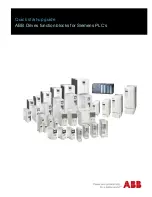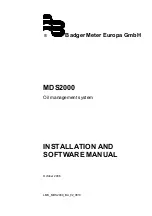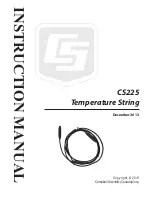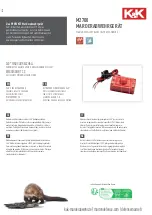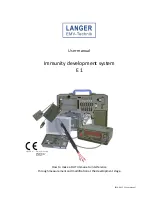
Speedster7t GDDR6 User Guide (UG091)
6
Chapter - 1: Introduction
The Speedster7t FPGA device family provides multiple GDDR6 subsystems that enables the user to fully utilize
the high-bandwidth efficiency of these interfaces for critical applications such as high-performance compute and
machine learning systems.The number of GDDR6 subsystems varies with Speedster7t device. For example, the
Speedster7t1500 device provides eight GDDR6 interfaces (GDDR6 subsystems), four on the east side and four
on the west side of the FPGA. Each subsystem comprises the GDDR6 controller and PHY hard cores and
supports up to 512 Gbps; as a result, the 7t1500 offers up to 4 Tbps of total bandwidth. The GDDR6 controller
and PHY in the subsystem are implemented as hard IP blocks in the I/O ring of a Speedster7t FPGA. For
resource counts for other Speedster7t family members, refer to the
(DS015).
Speedster7t FPGA Datasheet
Note
The following sub-sections in this user guide pertain to the 7t1500 device with eight GDDR6
subsystems.
Features
Each GDDR6 subsystem supports the following features:
Memory Density
– Supports GDDR6 devices from 8 Gb to 16 Gb, compliant with JEDEC GDDR6
SGRAM Standard JESD250.
Data Rate
- Supports 12 Gbps, 14 Gbps and 16 Gbps data transfer rate per pin, delivering up to 512
Gbps per subsystem interface. As a result, the Speedster7t with eight GDDR6 subsystems can deliver a
total bandwidth of 4 Tbps for the entire device.
Memory Interface
- The GDDR6 subsystem consists of two separate channels, each providing a 16-bit
interface. Hence each subsystem provides a 32-bit interface to the external memory.
Controller Configuration
– Supports dual-controller configuration with an independent memory controller
for each memory channel.
System Configurable Modes
– The subsystem can be configured as either ×16 mode or ×8 clamshell
mode for increased memory density applications.
Data Mask and Data Bus Inversion
– Supports GDDR6 data bus inversion (DBI) and command address
bus inversion (CABI). Also, supports write double-byte mask and write single-byte mask operations.
CA and DQ format
– Double data-rate command address and data bus.
ZQ Calibration
- Supports multiple master/slave ZQ calibration.
AXI4 Interface
– Connects to the other IP interfaces within the Speedster7t device or directly to the FPGA
fabric via an AXI4 interface with support for full or half-rate clocking. The connections utilize either a 256-
bit AXI4 interface to the network on chip (NoC), which can run up to 1 GHz, or a 512-bit AXI4 direct-to-
fabric interface, which can run up to 500 MHz.






















